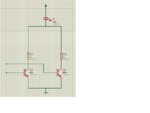beerdrinker
Newbie level 4
Hello this is my first post in your forum and I appreciate your help to design/ create a simple project.
The ideia is build two auxiliary braking light's to my motorcycle topcase.
My idea is to have both leds lighted up at about 50% of their power as rear running light and at full power when the brakes are activated.
Alternator info: 14 V/310 W at 5,000 r/min
I will use: 2 X 10W LED chip (9-12V; 1000mA each)
I stop studing electronics at about 15 years ago, so my knowledge is almost gone.
Thank you in advanced for your help!
The ideia is build two auxiliary braking light's to my motorcycle topcase.
My idea is to have both leds lighted up at about 50% of their power as rear running light and at full power when the brakes are activated.
Alternator info: 14 V/310 W at 5,000 r/min
I will use: 2 X 10W LED chip (9-12V; 1000mA each)
I stop studing electronics at about 15 years ago, so my knowledge is almost gone.
Thank you in advanced for your help!
